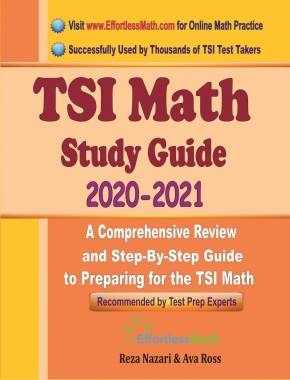A Guide to the Different Types of Continuity in Functions
Understanding the types of continuity is crucial for analyzing functions in calculus without having to rely solely on graphical representations. Here's a guide to help you understand the various classifications of a function's continuity based on its behavior over its domain.

Step-by-step Guide to Know Different Types of Continuity in Functions
Here is a step-by-step guide to know different types of continuity in functions:
Step 1: Comprehend the Domain of a Function
Before you dive into types of continuity, you need to understand the domain of a function. The domain is the set of all input values (\(x\)-values) for which the function is defined. For example, the domain of \(f(x)=x\) is all non-negative numbers since you can’t take the square root of a negative number and get a real result. The types of continuity of functions on the domain are:
Step 2: Continuous Everywhere
A function is continuous everywhere if, for every point within its domain, the function is continuous. This means that:
- The function \(f(x)\) must be defined for all \(x\) in its domain.
- The limit of \(f(x)\) as \(x\) approaches any point in the domain must exist.
- The limit of \(f(x)\) as \(x\) approaches any point must equal \(f(x)\) at that point.
Polynomials and sine and cosine functions are classic examples of functions that are continuous everywhere within their domain.
Step 3: Continuous on an Interval
A function is continuous on an interval if it is continuous at every single point within that interval. This interval can be open (e.g., \((a, b)\)), closed (\([a, b]\)), or half-open (e.g., \([a, b)\) or \((a, b]\)).
To check continuity on an interval, you need to:
- Confirm that \(f(x)\) is defined for all \(x\) in that interval.
- Check that the limits from both sides at any point within the interval exist and equal the function value at that point.
- Ensure that at the endpoints, if they are included in the interval (closed or half-open intervals), the function must also be continuous.
Step 4: Pointwise Continuity
A function has pointwise continuity at \(x=a\) if the function is continuous at that particular point. This simply means:
- The function \(f(a)\) is defined.
- The limit of \(f(x)\) as \(x\) approaches \(a\) exists.
- The limit of \(f(x)\) as \(x\) approaches \(a\) equals \(f(a)\).
Every point where these conditions are met is a point of continuity for the function.
Step 5: Left and Right Continuity
A function is right-continuous at \(x=a\) if:
- \(f(a)\) is defined.
- The limit of \(f(x)\) as \(x\) approaches \(a\) from the right (denoted as \(lim_{x→a^+}f(x)\)) exists.
- The right-hand limit equals \(f(a)\).
Similarly, a function is left-continuous at \(x=a\) if:
- \(f(a)\) is defined.
- The limit of \(f(x)\) as \(x\) approaches \(a\) from the left (denoted as \(lim_{x→a^−}f(x)\)) exists.
- The left-hand limit equals \(f(a)\).
Step 6: Analyzing the Function’s Behavior
When assessing a function’s continuity type:
- Determine the domain of the function first to know where the function is supposed to be evaluated.
- Analyze the function’s behavior at points and over intervals using the criteria for continuity.
- Recognize that functions can exhibit different types of continuity in different parts of their domain.
Understanding these classifications allows you to describe a function’s smoothness or identify possible points or intervals of discontinuity effectively, providing deeper insights into the behavior of functions without necessarily graphing them.
Related to This Article
More math articles
- Best Back-to-School Math Apps for Students
- The Ultimate GACE Elementary Education Math Course
- The Ultimate 6th Grade M-STEP Math Course (+FREE Worksheets)
- The Best Calculators for Grade 9 Students
- How to Find the Surface Area of Spheres?
- Top 10 7th Grade ACT Aspire Math Practice Questions
- How to Apply Integers Multiplication and Division Rules?
- Overview of the ACCUPLACER Math Test
- The Ultimate 7th Grade RISE Math Course (+FREE Worksheets)
- Top 10 5th Grade SBAC Math Practice Questions


















What people say about "A Guide to the Different Types of Continuity in Functions - Effortless Math: We Help Students Learn to LOVE Mathematics"?
No one replied yet.